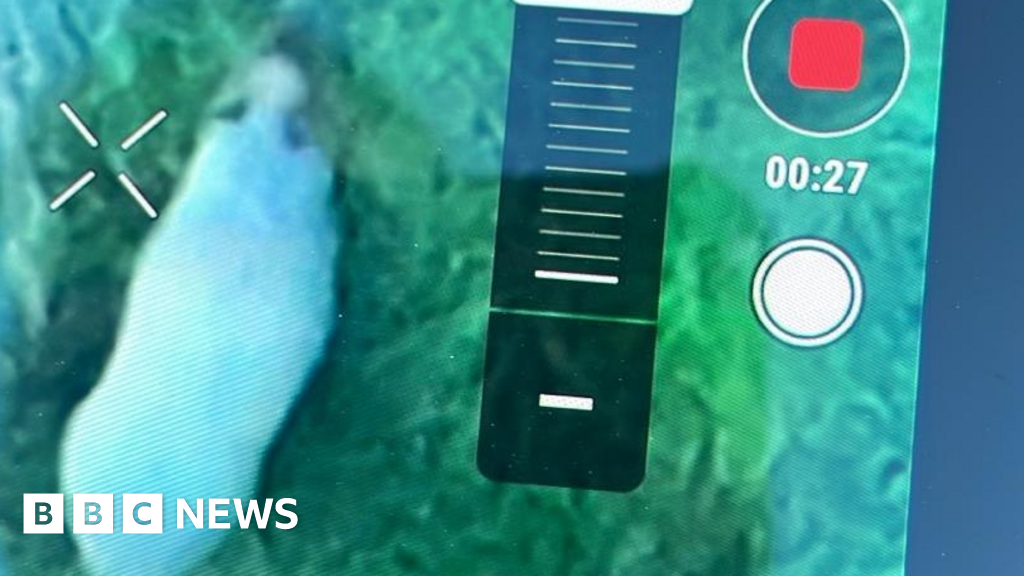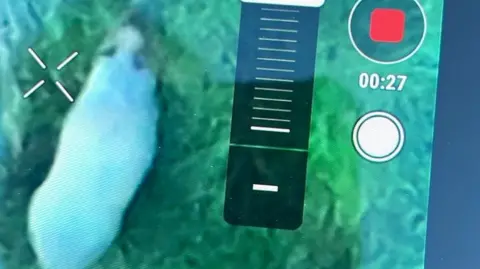 Hoo Zoo and Dinosaur World
Hoo Zoo and Dinosaur WorldA capybara missing from a Shropshire zoo has been spotted, but remains on the run in the wild.
Cinnamon managed to escape from her enclosure at Hoo Zoo in Telford on Friday when the gates were opened for grass cutting.
Will Dorrell from the zoo said she was not far away, and was spotted overnight by a drone in a field about 200m (650ft) away from her home.
However, he said locating her and catching her were “two very different things”.
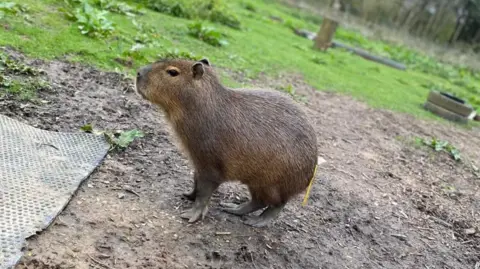 Hoo Zoo and Dinosaur World
Hoo Zoo and Dinosaur World“Last night we went out with a search party and put a drone up and we actually got a very good image of her fortunately in a field only about 200 metres from her home so we are very optimistic now we can hopefully entice her back or catch her,” he said.
“Obviously locating her and catching her are two very different things, but we are feeling a lot more optimistic.”
The team attempted to recapture her on Tuesday evening but said she managed to hide in dense thicket and a decision was made to place live traps rather than attempt to catch her by hand and cause her further stress.
The traps were cages with an automatic door that cause no harm to the animal, the zoo said.
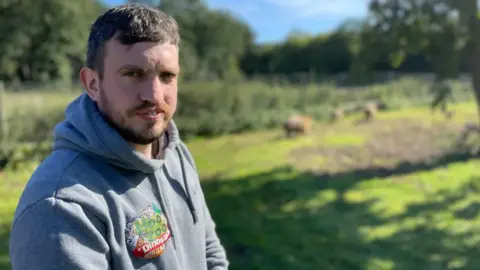
The rescue attempt has prompted huge interest as keepers plan a way of recapturing her.
Cinnamon was born at the zoo alongside brother Churro, and is now around one year old.
Mr Dorrell has said she made it to the Humber Brook river, near the attraction’s northern boundary, which was “a capybara’s paradise” due to the vegetation and nearby water.
“She can move up to 20mph if she really gets going and the undergrowth she can move through is a lot, lot thicker than what we can move through so we have got that issue as well.
“And she’s a fantastic swimmer so really she beats us on all counts,” he added.
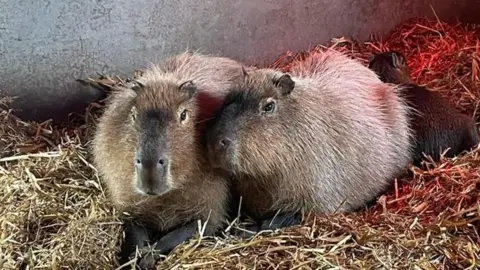 Hoo Zoo and Dinosaur World
Hoo Zoo and Dinosaur World“I’d love in an ideal world to say we’d have her back tonight or in 48 hours but the actual truth of the matter is, where she is is a capybara’s paradise.
“There’s loads of water over there, there’s loads of ponds, loads of streams, loads of food.”
He said they had seen her “munching on grass quite happily”.
“We watched her on the drone, sat there munching on grass quite happily so realistically, getting her back is going to be a challenge.”
He said they would continue to monitor the situation while carrying out further searches and thanked everyone for their help so far.
The animals are native to South America and are the largest living rodents in the world.
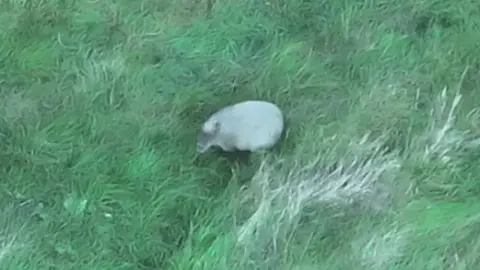 Hoo Zoo and Dinosaur World
Hoo Zoo and Dinosaur World
